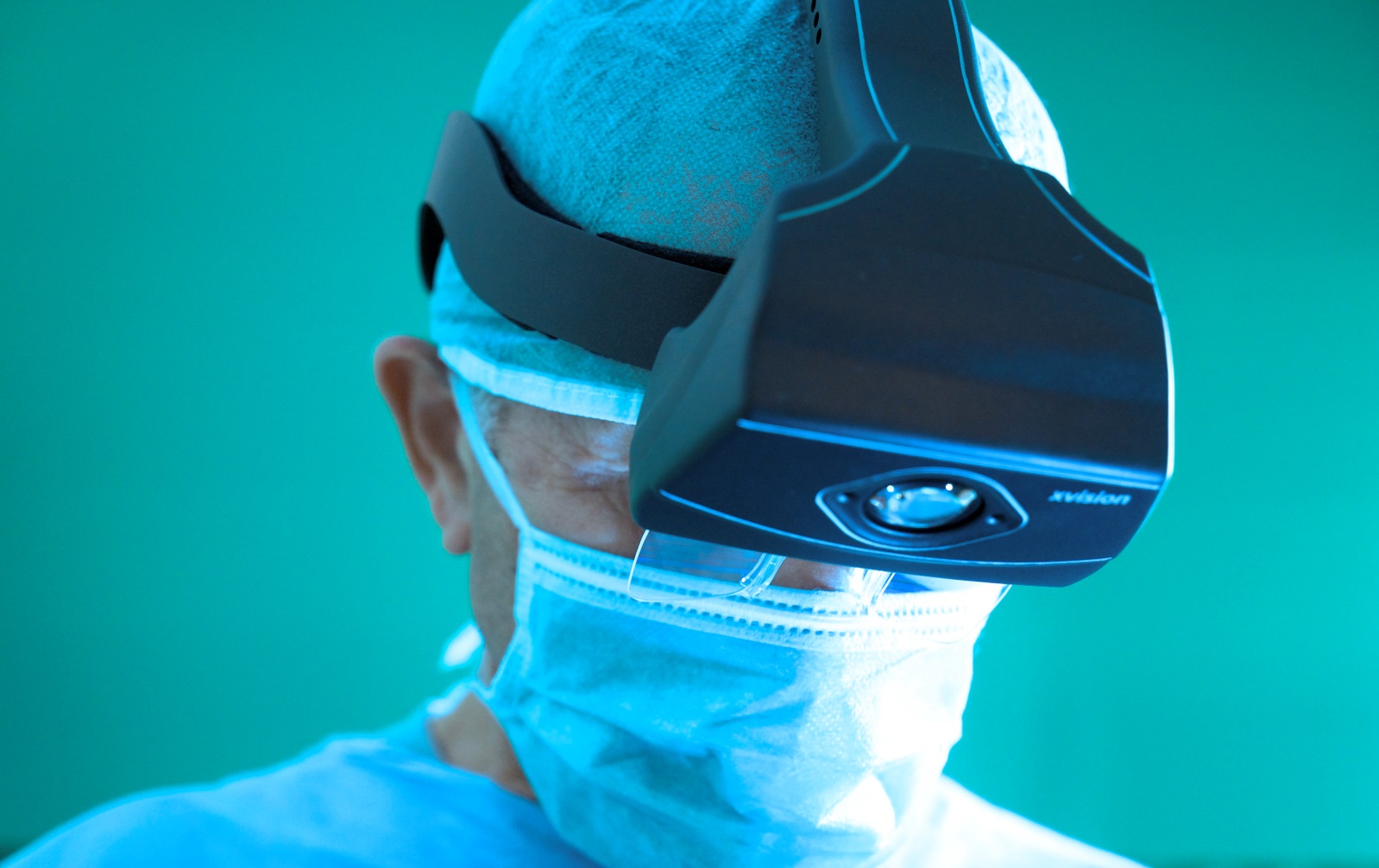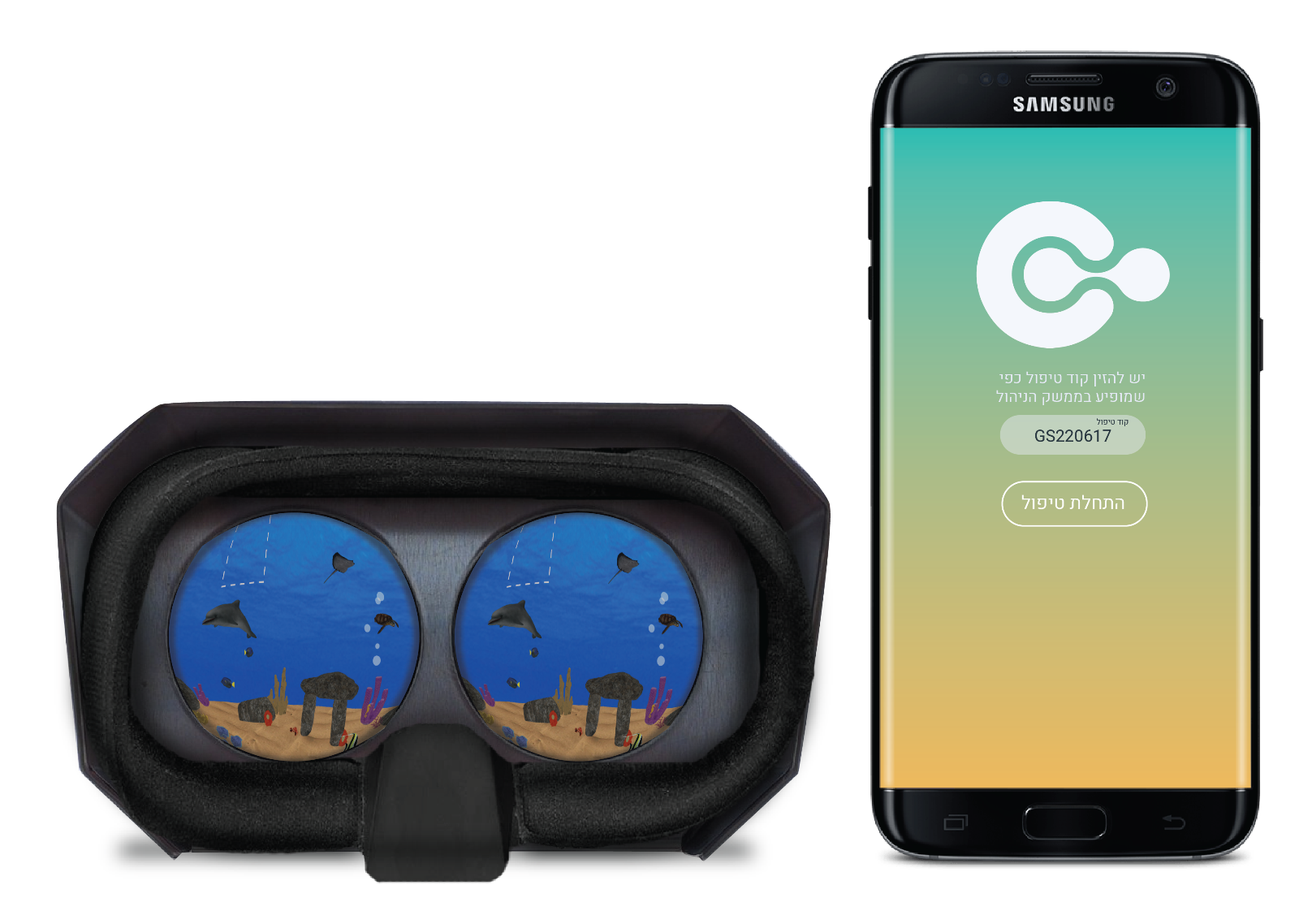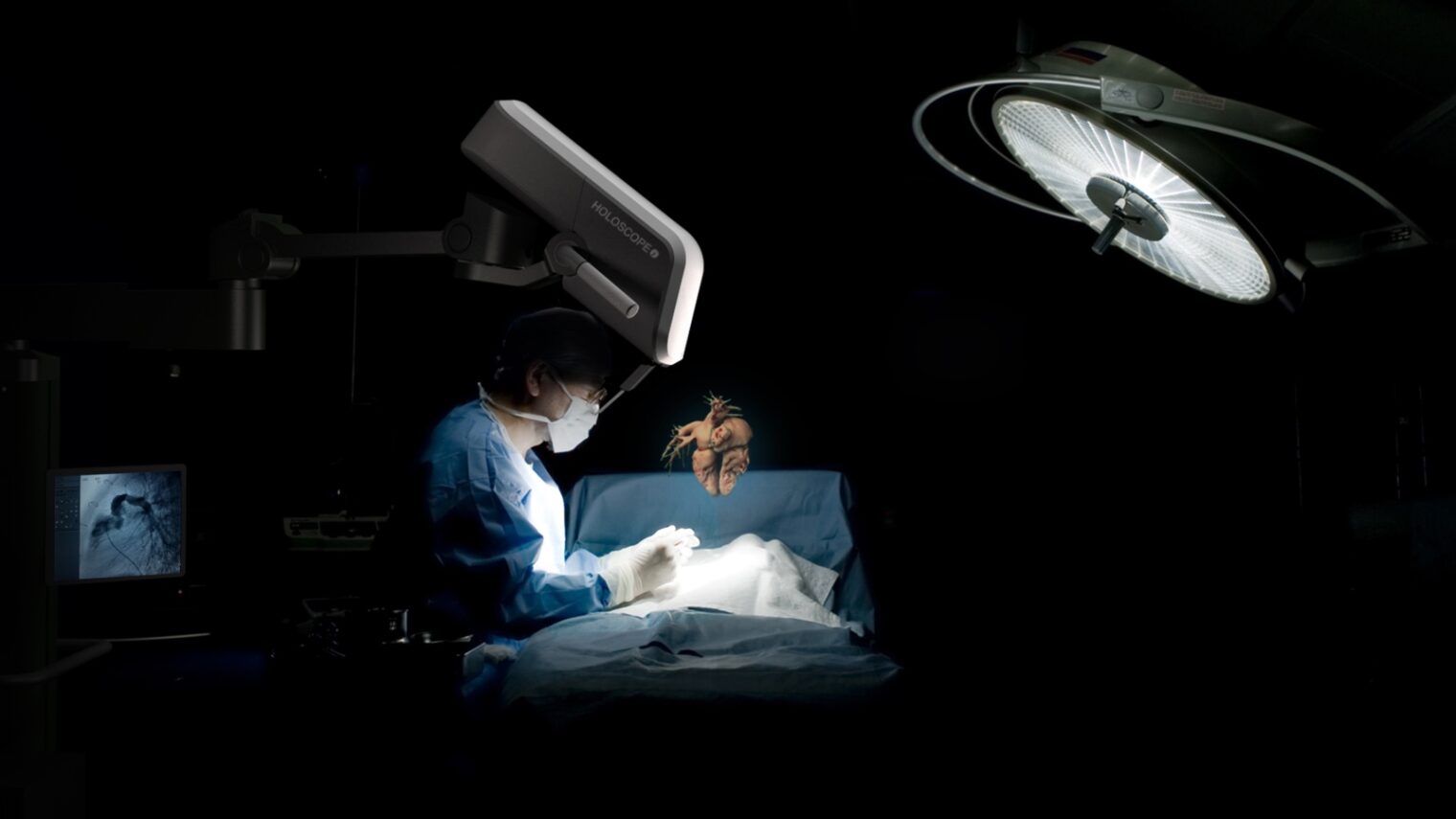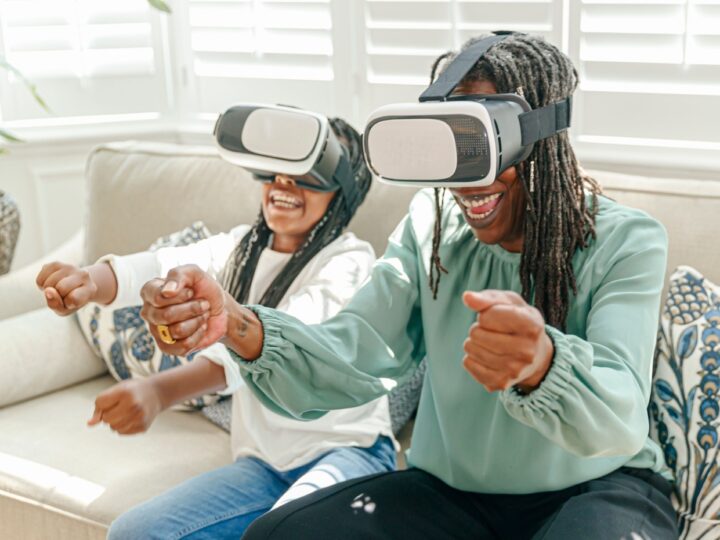Spine and heart surgeons will use augmented reality (AR) to simplify complex procedures. Autistic children will get relief from sensory overload with a calming virtual reality (VR) system.
These and other scenarios are made possible by Israeli innovations tapping into the tremendous potential of AR and VR for healing and wellbeing.
The methods are similar: AR superimposes static and moving images to enhance an actual environment, while VR immerses the viewer in a simulated three-dimensional environment.
“Israel is on the frontlines in some areas of this technology,” says Orit Elion, a professor of physical therapy at Israel’s Ariel University, which hosted a conference last year to strengthen cooperation between AR and VR developers and researchers for health applications.
Elion helped develop a VR-based tele-rehab service at the Gertner Institute of Chaim Sheba Medical Center in Tel Hashomer, now used across Israel to enable monitored home physical or occupational therapy sessions for patients living far from healthcare centers.
“There aren’t so many programs in the world like this — a service that has no geographic boundaries,” Elion tells ISRAEL21c.
Currently, she is investigating how VR training can help with balance and fall prevention in the elderly. “VR is a dream for that, because you can manipulate the environment with all kinds of visual input,” she says.
Here are other examples of Israeli AR and VR in the health sector.
Neurosurgery
Surgical Theater makes a portfolio of VR products based on the notion that surgeons could train for complex procedures much like the Israeli founders of the company trained for Israel Air Force missions. Neurosurgeons at major medical centers and academic institutions in the United States and elsewhere are utilizing Surgical Theater’s VR medical visualization platforms for surgical planning and navigation, patient education and engagement, and training surgical residents.
Heart surgery
In the first quarter of 2018, RealView Imaging will release its long-awaited HOLOSCOPE-i, designed to deliver live, in-air 3D holographic visualizations during interventional cardiology procedures.
Powered by the Intel RealSense SR300-Series camera based on RealView’s proprietary digital light shaping technology, HOLOSCOPE-i is the first commercial system allowing clinicians full and direct control of 3D images in real time. Surgeons can rotate, zoom, slice, mark and measure within the floating holograms.
Coming next from RealView Imaging are HOLOSCOPE-x for visualization of holograms inside the patient during interventional oncology procedures, and a holographic headset for non-medical professional applications.
https://youtu.be/-fbqXMuXOg0
Spine surgery
Augmedics develops xvision, an AR head-mounted display for spine surgery that allows surgeons to see the patient’s anatomy through skin and tissue, as if they had “x-ray vision.” The system can project the patient’s anatomy, in real time, directly onto the surgeon’s retina, with the aim of increasing safety in surgery, reducing x-ray radiation and facilitating minimally invasive procedures.

Using xvision, surgeons will be able to visually and accurately track all their surgical instruments well within their field of vision as they work. A combination of proprietary tracking algorithms, hardware, software, an image data merging unit, and specialized instruments guide the surgeon through the operating site during major and minor procedures.
The xvision system will also utilize sensors to collect surgical information, which, when connected to a big data system, will analyze and process the data, using profound learning algorithms to provide alerts and suggestions to assist the surgeon during the procedure.
Augmedics has already performed pre-clinical cadaver trials in the US and EU. The company will start clinical studies in Q2 2018 in Israel, and later this year at the Johns Hopkins Hospital in Baltimore, Maryland.
Sensory modulation
Using VR goggles, the Calma system immerses an autistic child in a simulated underwater scene filled with corals, colorful fish, bubbles and divers.
“Children on the autism spectrum typically suffer from sensory moderation disorder, traditionally treated in a ‘white room’ where various objects are gradually introduced. This is costly and not always readily available. Our initiative simulates the white room with VR,” says Dan Kohen-Vacs, a senior computer science researcher at Holon Institute of Technology (HIT), where Calma was invented by students last year.
A management console allows the therapist to add, moderate or remove stimulants (including music) in response to the reaction of the child in real time. The goal is to train the child’s sensory regulation system to better handle auditory and visual stimulants and achieve emotional balance.

“We are completing the first proof-of-concept version and testing it in the Dekalim school in Jerusalem,” Kohen-Vacs tells ISRAEL21c. HIT’s tech-transfer company will work on commercializing the system.
“The plan is to expand to other locations. It may be possible to enable parents to use the system at home. You just need a smartphone and something like Google Cardboard that enables you to put the phone in it and wear it as headset,” says Kohen-Vacs.
Amit Bar-Tov, an occupational therapist at Dekalim, told Globes that the Calma pilot met with “great enthusiasm among the students for emotional regulation and sensory regulation, an improvement in learning capabilities, and a better connection with the environment.”
Burn rehab
Prof. Josef Haik, director of Sheba Medical Center’s Burn Center, has been using VR for more than a decade as a bedside tool to ease the painful process of rehabilitation from severe burns.
“It’s all about early mobilization and rehabilitation, getting back to the tasks of everyday life,” Haik tells ISRAEL21c.
In 2004, Sheba installed a large Computer Assisted Rehabilitation Environment (CAREN) system in a pioneering move toward VR in treatment and rehab. Burn patients couldn’t be moved to the CAREN room so Haik came up with an inexpensive portable alternative using EyeToy, a digital camera device for PlayStation. Today he’s using Kinect with games devised for patients with certain disabilities.
VR gaming therapy offer several advantages, says Haik: The games distract patients and thereby lessen their pain perception; allow patients to adapt to seeing and accepting the look of the scarred area of their body onscreen; and use rewards such as points to encourage continuation of therapy. Moreover, the patient does not have to wear or touch anything, eliminating any risk of cross infection.
Haik reported on the therapy in a 2006 study and has presented his approach to the American Burn Association and other associations around the world.
Stroke and traumatic brain injury
The SeeMe VR rehab system was developed by physiotherapists at Beit Rivka Geriatric Rehabilitation Hospital in Petah Tikva in cooperation with Brontes Processing of Poland for stroke or traumatic brain injury patients.
It has been on the market since 2009, making it the first commercial VR system of its kind.
SeeMe’s technology transmits images to the patient’s computer via a Kinect controller or standard web camera and immerses the patient in a customized computer game requiring specific exercises set by the therapist.
The clinician can use the system to evaluate strength, endurance, range of motion, postural control, reaction time, proprioception, quality of movement, perception, divided attention and memory.
Parkinson’s disease and multiple sclerosis
Studies by scientists from the Technion-Israel Institute of Technology, Tel Aviv Medical Center and Tel Aviv University over the past decade have shown that incorporating VR headsets in gait training improved the walking abilities of people with multiple sclerosis and reduced fall risk in Parkinson’s patients. The latest study, published in Neurology in September, found that VR training actually modifies brain activation patterns in Parkinson’s patients.
PT and pain relief
Caesarea-based Motorika Medical’s ReoAmbulator robotic gait-training device helps adults and children improve walking, balance, coordination, posture or stamina while focusing on accomplishing VR tasks to improve motor or cognitive function including memory and selective attention. Combining these tasks in one session is meant to add a higher degree of challenge leading to better results. On the market since 2014, ReoAmbulator is used in two countries in Asia, five in Europe and in the United States — around 30 installations so far.
VRHealth of Tel Aviv and Boston is partnering with major players including Oculus, HTC and Microsoft to launch the first cross-platform-compatible VR medical application for rehab.
“We believe we are the only medical device company using an immersive headset as certified medical software,” founder Eran Orr tells ISRAEL21c. “What makes it a medical device is how you keep the data encrypted, how you can integrate electronic medical records and whether there is a billable insurance code for physicians to use. There is quality assurance and documentation for every app we are developing.”
VRHealth’s flagship VRPhysio software applications – two for neck therapy and one for shoulder therapy – got FDA clearance and are being implemented first in Spaulding Rehabilitation Hospital and Beth Israel Deaconess Medical Center in Boston. CE approval for Europe is expected soon.
VRHealth plans to launch additional products within a year: VRCoordi, which will work with VRPhysio to improve coordination skills, initially of children with developmental coordination disorder and various levels of autism; VRCogni to improve cognitive function in stroke, Alzheimer’s, concussion, Parkinson’s and dementia patients; VRReliever to manages chronic and severe pain through distraction; VRPsyc to enhances treatment for diagnosable mental disorders including general stress, phobias and anxieties, eating disorders, and PTSD.
“I hope our company will make a difference in the entire healthcare sector — every hospital, nursing home and assisted living — because VR can make a huge difference in many fields,” says Orr.
“I think Israel has a lot of potential in this technology because of the quality of engineers and developers able to develop products at a rapid pace and to be first to market and expand from there. That’s why we maintain our R&D in Israel.”

















